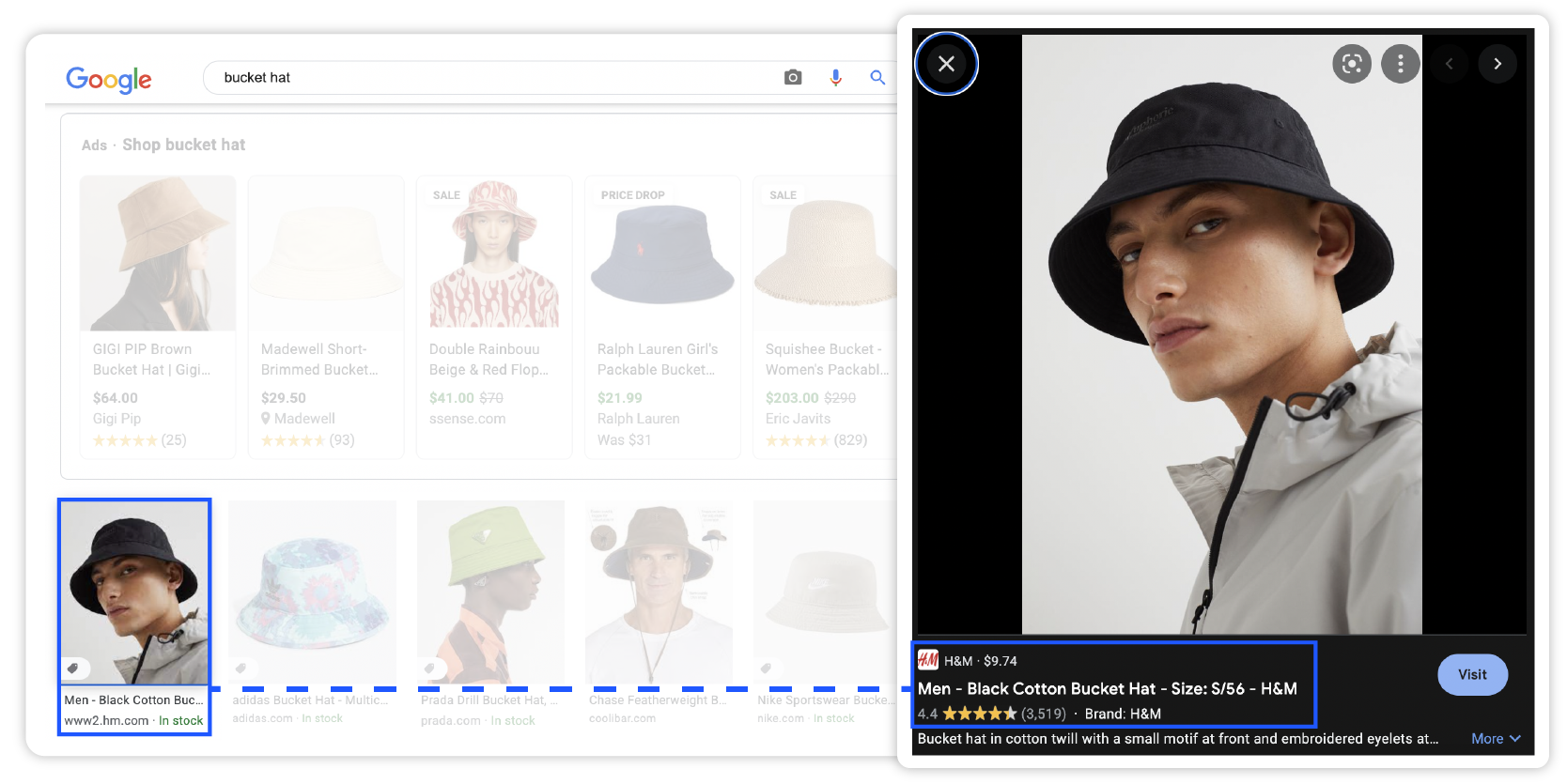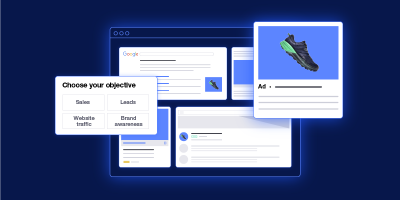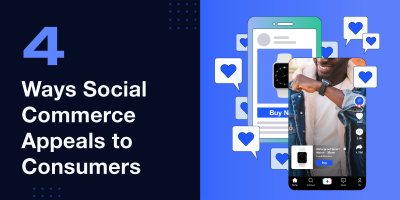When you compare today’s ecommerce with the online shopping experience of the early 2000s, you start to really notice how much more accessible the world of e-tail has become. The convenience of internet shopping today stems from improvements in web accessibility.
Why is web accessibility important in ecommerce?
Web accessibility is the inclusive practice of ensuring that regardless of the user, there are no barriers impeding the functionality and access to information on the internet. Today, more than 15% of the global population experiences some form of disability, and providing accommodations can benefit all users. The power to buy more products, same-day delivery, or even more relevant search results all increase customer satisfaction and the likelihood of creating a return shopper.
Want to make your product feeds more accessible and reach even more customers? Keep reading for things you can do right now to improve your web accessibility and give a boost to your current product feeds.
1. Go the extra mile with your product listings
Short, simple titles and descriptions may seem like the easiest option when creating a product feed, especially when you have to name hundreds or even thousands of products. However, your product’s title is the most prominent part of your listing and what customers see first. Ensuring that your titles are descriptive, concise, and accurate helps people find what they want and improves the overall customer experience, not to mention your search engine rank. This has the double benefit of increasing your product listing accessibility while also making sure your products are visible online.
Optimize your product listings for assistive technology
Screen readers or text-to-speech systems with optical character recognition can assist people who are blind or visually impaired. When product listings are clear and descriptive, a screen reader can easily describe what is displayed on a computer screen or phone app. Speech recognition systems have also grown in global popularity.
Statista forecasts that by 2024 the number of digital voice assistants will grow from 4.2 billion to 8.4 billion units. Speech recognition is also an excellent tool when a user is suffering from a situational disability and unable to use a keyboard or other physical input devices. A situational disability could be the temporary inability to use your hands due to injury, or a parent not being able to use their right arm because they need to hold their baby.
Google Assistant, Siri, Alexa, and other speech recognition tools provide better voice-search results when the web pages or product listings have optimized titles and descriptions.
Related articles: To learn more about creating product titles, check out our blog on How to Create and Optimize Your Google Shopping Product Titles and the Best Practices to Create the Perfect Product Titles for Amazon Listings.
Include optional attributes in your product listings
Many marketplaces have optional attributes that you are not required to include in your product data. However, when you include as many of these optional attributes as possible, you improve web accessibility by helping the channel better categorize your product listings. Better product categorization allows search algorithms to connect your product or brand more easily with the right customer.
2. Optimize your images
High-quality product images are a must when you are selling online, and including alt text for each of your images can give your product an extra boost.
Alt text, also known as alternative text or “alt tags,” is an HTML code element that describes an image for screen readers or other assistive devices. When a screen reader reaches an image, it reads this alt text description to the user. Many overlook this detail, but doing so potentially excludes those who are visually impaired.
Another happy consequence of including alt text is that, similar to optional attributes, alt text helps classify your products. Image recognition technology has made great strides in the last decade, but it still isn’t perfect. That’s where alt text comes in and gives the image more context.
Here’s an example:

The title describes the product, and the alt text describes the image itself. This helps give users who cannot view the image a richer sense of the product. Not only does alt text improve product listings themselves, but they also expand your listing’s reach. Search engines also use alt text to classify images better. Google Images, for example, uses alt text alongside image recognition to provide image matches for what users search for.
Google’s free listing program can even promote your product listings via Google Images. So if people search for an image of a black bucket hat, they’re given the option to purchase the hat in the photo as well.

Compress your product images appropriately.
High-quality images are essential to give your customer an accurate depiction of an item, but high quality does not always mean high resolution. Large file sizes can create a barrier for those experiencing a socio-economic disability—that is someone who does not have access to a high-speed internet connection, or can only access the internet via a mobile device. Compressing your images on your website and product pages helps ensure faster load times so that you don’t miss out on a potential conversion.
For ad channels and marketplaces, brands must follow the image specifications when uploading a product feed. Many marketplaces have their own setup to compress or format your images to create a uniform experience for the user. If you aren’t following their recommendations, the photos in your product listings cannot perform to their full potential.
3. Ensure your website and product landing pages are mobile-friendly
As mentioned before, page load time can make or break a customer’s experience. Google found that 53% of users will leave a mobile site if it takes longer than three seconds to load. In addition to ensuring your images are compressed, you should also make sure your website is optimized for mobile use.
Ecommerce merchants can benefit from creating a simplified version of their website that appears when someone browses their site from a mobile device. Though many browsers can force generate a simplified website, certain user experiences can be lost along the way. Creating your own simplified site helps you maintain control of how users interact with your brand.
Some ways you can improve your website’s mobile-friendliness include:
- Utilizing a responsive layout that scales to the type of screen your website is viewed on.
- Removing elements that contribute to slower load times, like animations or videos, on mobile.
- Ensuring buttons have a large clickable area size.
- Streamlining processes for mobile users. For this, try to imagine the customer’s journey and reduce the number of necessary user interactions to get them to where they want to go. Example: Creating a UI wizard that allows users to input the criteria of the product they want, prompting the website to automatically show the products that meet these requirements.
Want to see if your website is mobile-friendly? Check out Google’s guide on mobile friendliness and test your site pages with the mobile-friendly test.
4. Make sure your product listings and landing pages match
When customers search for your product online, or on a marketplace like Amazon or eBay, they expect to see the same information listed consistently across all of your channels. If your messaging is inconsistent, you may confuse your customers. For example, for those who are visually impaired and rely on the product title and description, minor differences in language can make it difficult for customers to ensure they are purchasing what they want.
Mismatched data is also a concern when you utilize Google Merchant Center. Google may disapprove your listings if your product data does not match your website’s information. If you have too many products that have mismatching information, it may lead to an account suspension.
Improving accessibility gives your ecommerce business an edge over the competition.
In the end, high-quality, structured data is always the key to better performance and increased web accessibility. Whether it is a free listing on Google Shopping or a listing on Amazon, being as inclusive as possible can set your data feed up for success. Upgrading your product feed can be a lot of work, so let our feed experts do the heavy lifting for you!
Book a demo today to see the power of optimized data.

With its leading data feed management platform, Feedonomics helps brands, retailers, and agencies optimize and list products on hundreds of shopping destinations around the world. Learn more about our full-service solutions for advertising channels and marketplaces.




